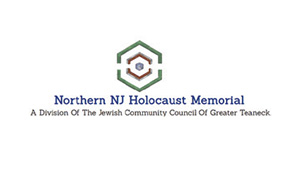
The Northern New Jersey Holocaust Memorial and Education Center, co-chaired by longtime Teaneck residents Steve Fox and Bruce Prince, seeks to both perpetuate the memory of the Holocaust and educate people of all ages and backgrounds about the horrors and atrocities that took place. In keeping with the goal of educating the public, the Center marked Yom HaShoah 2020 by presenting two speakers via a Zoom session that was open to all.
Rabbi Jacob J. Schacter is a well-known scholar and educator who currently serves as a professor of history and Jewish thought at Yeshiva University. His topic, “Facing the Future After Adversity—Commemorating the Holocaust,” addressed the topic of resilience 75 years after the liberation of the notorious death camps. Growing up in the home of Rabbi Herschel Schacter, the U.S. Army Chaplain who liberated the Buchenwald concentration camp on April 11, 1945, his entire childhood was a narrative of memory and resilience. Sensitivity to survivors who were constantly coming into his life created in him an appreciation for their resilience and faith in God.
Rabbi Schacter related an inspirational story from his father’s trove. When the senior Rabbi Schacter came into Buchenwald wearing his American army uniform sporting a pin with Hebrew lettering, the emaciated survivors were incredulous. Who was this man and why was he speaking Yiddish to them? Only minutes before liberation, soldiers were their enemies. To allay their fears, Rabbi Schacter asked them what he could do for them. One young man hesitantly came up to the rabbi saying, “Until one month ago, I put on my tefillin every morning under the noses of the guards. One month ago they discovered what I was doing, beat me brutally and confiscated my tefillin. Would you be able to get me a new pair of tefillin?” Rabbi Schacter, not expecting such a request, immediately handed the youth his own tefillin. This young survivor, Professor Daniel Hershkowitz, eventually served as a rabbi in Haifa, became the Israeli Minister of Space and finally the president of Hebrew University. In the year 2,000, Rabbi Jacob Schacter met up with Rabbi Hershkowitz and asked him why he had devoted his life to the betterment of the Jewish people. Rabbi Hershkowitz responded that the spontaneous and genuine gift of tefillin from Rabbi Schacter’s father had given him the impetus to ensure the Jewish future through faith and resilience.
Citing the perek in Sefer Yechezkel where the prophet sees lifeless dry bones spread upon the ground that eventually rise up and form living beings, Rabbi Schacter spoke of three interpretations of their coming to life that relate to the three directions taken by Holocaust survivors after the Shoah. The first group rose up, sang and then died. Those were the survivors who made it through physically but did not continue on in the Jewish tradition. The second group rose up, married and moved to Eretz Yisrael to build it into a Jewish state. These are the chalutzim who built the State of Israel into a modern, thriving country. The third group are those who rose up and took their tefillin with them, thus committing to the future of the Jewish people.
He concluded, “Let us maintain our mesorah and pass it down to the current fourth generation and onward so that we ensure our survival as a Jewish people.”
The second presenter was Professor Dennis B. Klein, professor of history and director of the Jewish studies program and master of arts in Holocaust and genocide studies at Kean University. Professor Klein’s topic was “The Incrimination of the Bystander and its Holocaust Subtext.” Through a PowerPoint presentation, Professor Klein illustrated the role of the bystander throughout many historical events, not limited to the Holocaust. Through slides of various periods in U.S. history, such as the lynchings in the South, he showed how the bystander was a complicitous participant in such atrocities. Addressing the Holocaust, he showed the smiling faces of the onlookers in many well-known Holocaust images. In the 1960s, when the last of the Nazis had been tried, many of them only receiving short prison sentences, the survivors began to write their own memoirs in which they identified the bystanders as having abandoned them, as going from former friends and neighbors to turning their backs and even cheering on the persecutors.
In closing, Fox invited the community to visit the website of the Northern New Jersey Holocaust Memorial and Education Center to learn more about their plans for the future of the memorial. Visit www.nnjholocaustmemorial.org.
By Pearl Markovitz













